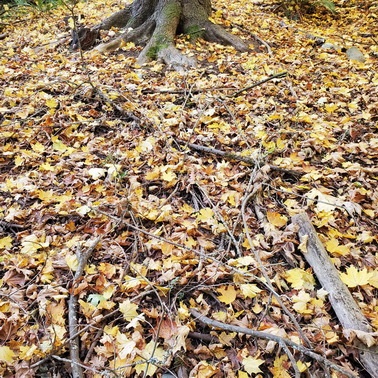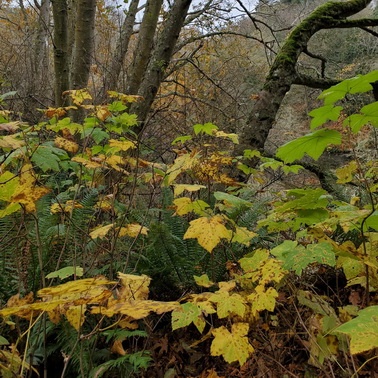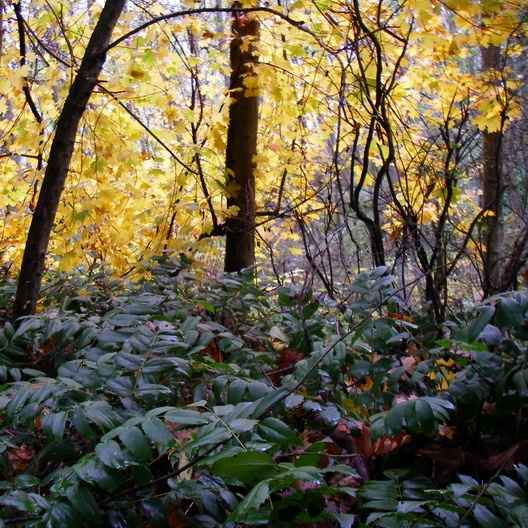Norway Maples – Now is the Time
I took the picture above in mid-November 2007, before I knew much about the Norway Maple. At the time, I was simply enjoying the bright yellow leaves that remained after almost all of the other trees were bare. Since then, I have learned that beautiful autumn leaves notwithstanding, these trees are invasive, and they are a problem across many mid-latitude forests of North America.
The Kaufmans, in their 2013 book on invasive plants, write that “Norway maple casts heavy shade and its shallow, dense root system makes it difficult for other plants to establish. Generally only Norway maple seedlings can grow under mature Norway maple trees.”
I took the photo below to show a patch of barren forest floor underneath a large Norway Maple in Everett’s Forest Park.

Norway Maples grow vigorously and reproduce prolifically and are likely to persist in Puget Sound forests. If you already have a large Norway Maple in your backyard forest you may have to either get it removed by a professional or live with it. However, since seedlings and saplings are fairly easy to remove by hand, you can keep new ones from getting too large.
Even in November, however, to avoid removing a native Maple or Thimbleberry that happens to have lingering yellow leaves, I have learned to look at the leaves’ shapes. The leaves of the Norway Maples have five sharp-pointed lobes. Though they also have five lobes, the leaves of the native Bigleaf Maples have duller points and deeper grooves between lobes, and the leaves of the native Vine Maples have 7-9 lobes. The leaves of Thimbleberry shrubs have maple-like leaves but with dull points on their lobes (see photo below).

With that small caution in mind, I think that this is a good time to get out in the forest this week, look for those bright yellow leaves on seedlings and saplings, and remove any Norway Maples while they are still small.
